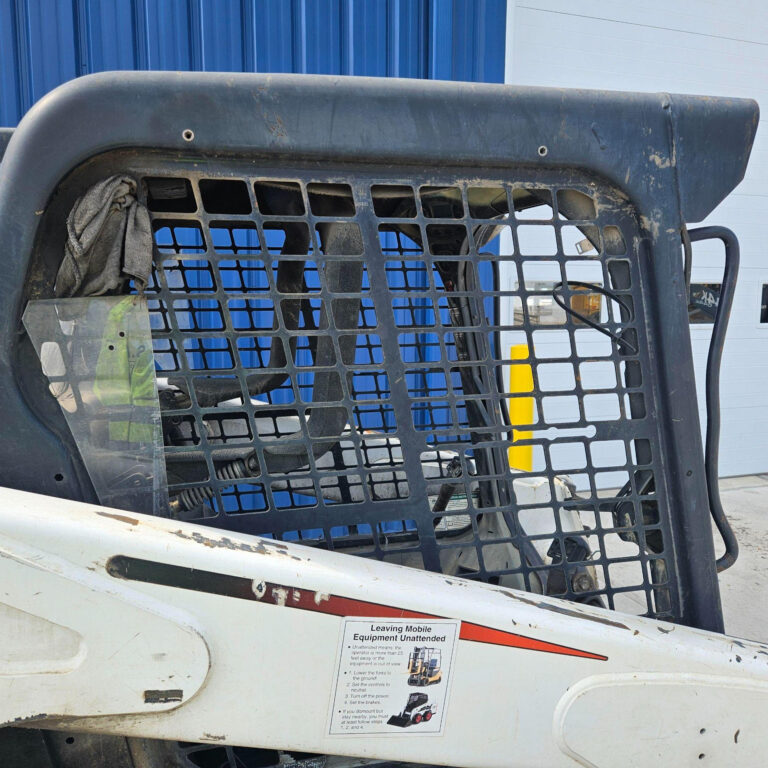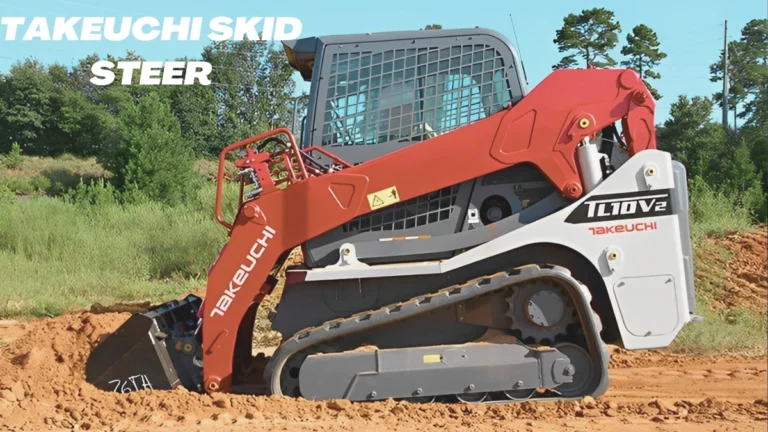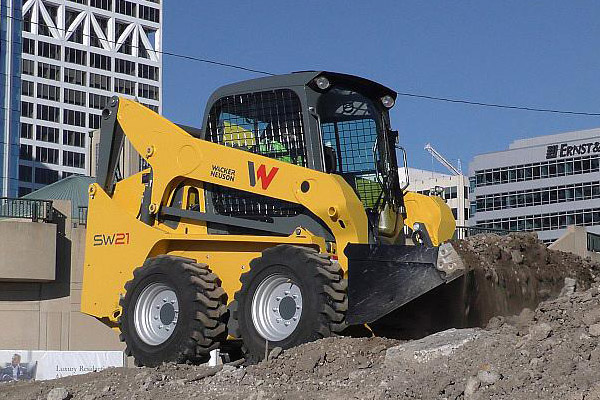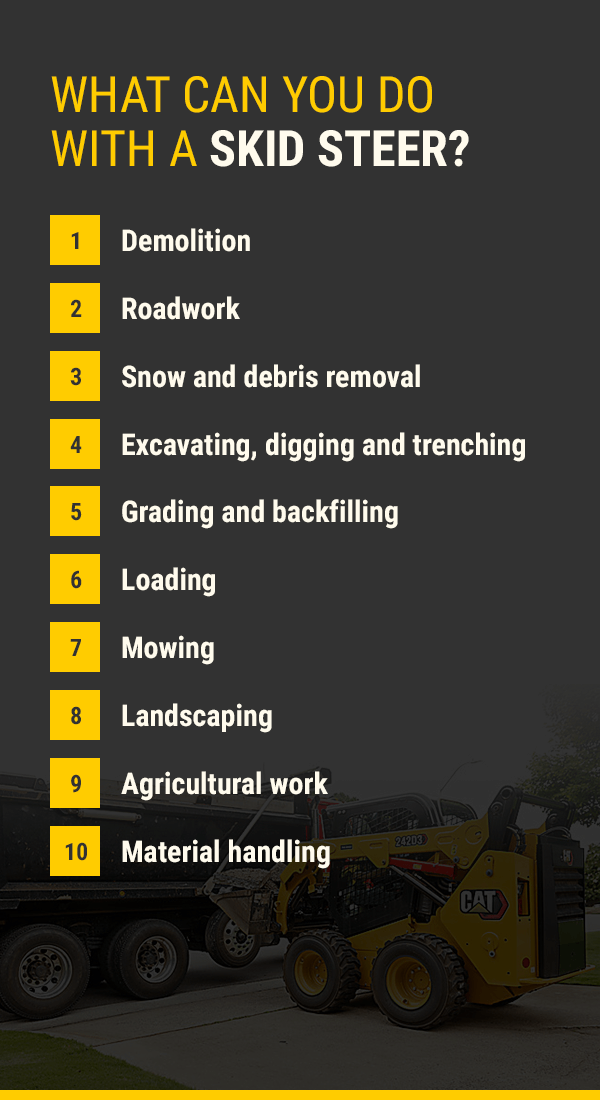What is Standard Flow for Skid Steer? Unveil the Power
Standard flow for skid steers refers to the hydraulic system that delivers a constant flow of fluid to attachments. This system enables efficient operation of various tools, enhancing productivity.
Skid steers are versatile machines widely used in construction, landscaping, and agriculture. Their ability to handle different attachments makes them invaluable on job sites. Understanding standard flow is crucial for optimizing performance. This hydraulic system typically operates at a flow rate between 10 to 30 gallons per minute, depending on the skid steer model.
Proper matching of attachments to the skid steer’s flow rate maximizes efficiency and minimizes wear. Operators benefit from knowing the standard flow, as it helps in selecting the right tools for tasks, ensuring seamless operation and better results.
Introduction To Skid Steer Standard Flow
Skid steers are versatile machines. They work in many environments. Understanding the concept of Standard Flow is essential for effective use. This guide explains Standard Flow and its importance in hydraulic systems.
Basics Of Skid Steer Functionality
A skid steer is a compact, powerful machine. It has two tracks or wheels that allow it to pivot. This design enables tight turns and agile movement. Here are key features:
- Compact Size: Fits into small spaces.
- Versatile Attachments: Can use buckets, forks, and more.
- Hydraulic Power: Enables effective operation of attachments.
Skid steers are commonly used in:
- Construction
- Landscaping
- Agriculture
Defining Standard Flow In Hydraulic Systems
Standard Flow refers to the flow rate of hydraulic fluid. It is crucial for operating attachments effectively. Typically, standard flow rates for skid steers range from:
| Flow Rate (GPM) | Common Applications |
|---|---|
| 12-17 GPM | Small Attachments |
| 18-30 GPM | Medium Attachments |
| 30+ GPM | Heavy-Duty Attachments |
Understanding flow rates helps in selecting suitable attachments. Higher flow rates provide more power for heavy work. Matching the flow rate with the attachment ensures optimal performance.

Credit: idigtexas.com
Comparing Standard Flow To High Flow
Understanding the differences between Standard Flow and High Flow for skid steers is crucial. Each flow type affects performance and attachment compatibility. Knowing these differences helps operators choose the right setup for their tasks.
Key Differences And Advantages
| Feature | Standard Flow | High Flow |
|---|---|---|
| Flow Rate | Up to 20-25 GPM | Above 25 GPM |
| Power | Lower power output | Higher power output |
| Attachment Compatibility | Basic attachments | Advanced attachments |
| Cost | Less expensive | More expensive |
Standard Flow is ideal for light-duty tasks. It is cost-effective and suits basic attachments like buckets or forks. It offers sufficient power for tasks like grading or leveling.
High Flow provides more power for heavy-duty work. It supports advanced attachments like high-flow mulchers or snow blowers. This flow type enhances productivity in challenging conditions.
Impact On Skid Steer Performance
- Efficiency: High Flow improves efficiency in demanding tasks.
- Versatility: Standard Flow suits various light tasks effectively.
- Speed: High Flow allows faster operation with larger attachments.
- Fuel Consumption: Standard Flow generally uses less fuel.
Choosing between these flows affects your skid steer’s performance. High Flow is better for tougher jobs. Standard Flow works well for everyday tasks. Understanding your needs helps in making the right choice.
Hydraulic Systems In Skid Steers
Hydraulic systems play a crucial role in skid steers. They provide the power needed for lifting and moving heavy loads. Understanding these systems helps operators maximize their machine’s efficiency.
Components And Operation
The hydraulic system consists of several key components:
- Hydraulic Pump: Converts mechanical energy into hydraulic energy.
- Hydraulic Fluid: Transmits power and cools the system.
- Actuators: Convert hydraulic energy back into mechanical movement.
- Valves: Control the flow and direction of the hydraulic fluid.
Here’s how it operates:
- The pump pushes hydraulic fluid through the system.
- Fluid flows to the valves for direction control.
- Actuators receive the fluid and create motion.
| Component | Function |
|---|---|
| Hydraulic Pump | Generates hydraulic pressure |
| Hydraulic Fluid | Transmits power and cools |
| Actuators | Produces movement |
| Valves | Regulates flow and direction |
Maintenance Tips For Optimal Flow
- Regular Fluid Checks: Inspect hydraulic fluid levels frequently.
- Change Fluid: Replace fluid as per the manufacturer’s schedule.
- Inspect Hoses: Look for leaks or wear on hydraulic hoses.
- Clean Filters: Keep hydraulic filters clean to prevent clogs.
- Check Connections: Ensure all connections are tight and secure.
Following these tips helps avoid costly repairs and downtime. Proper maintenance extends the lifespan of the hydraulic system.
“`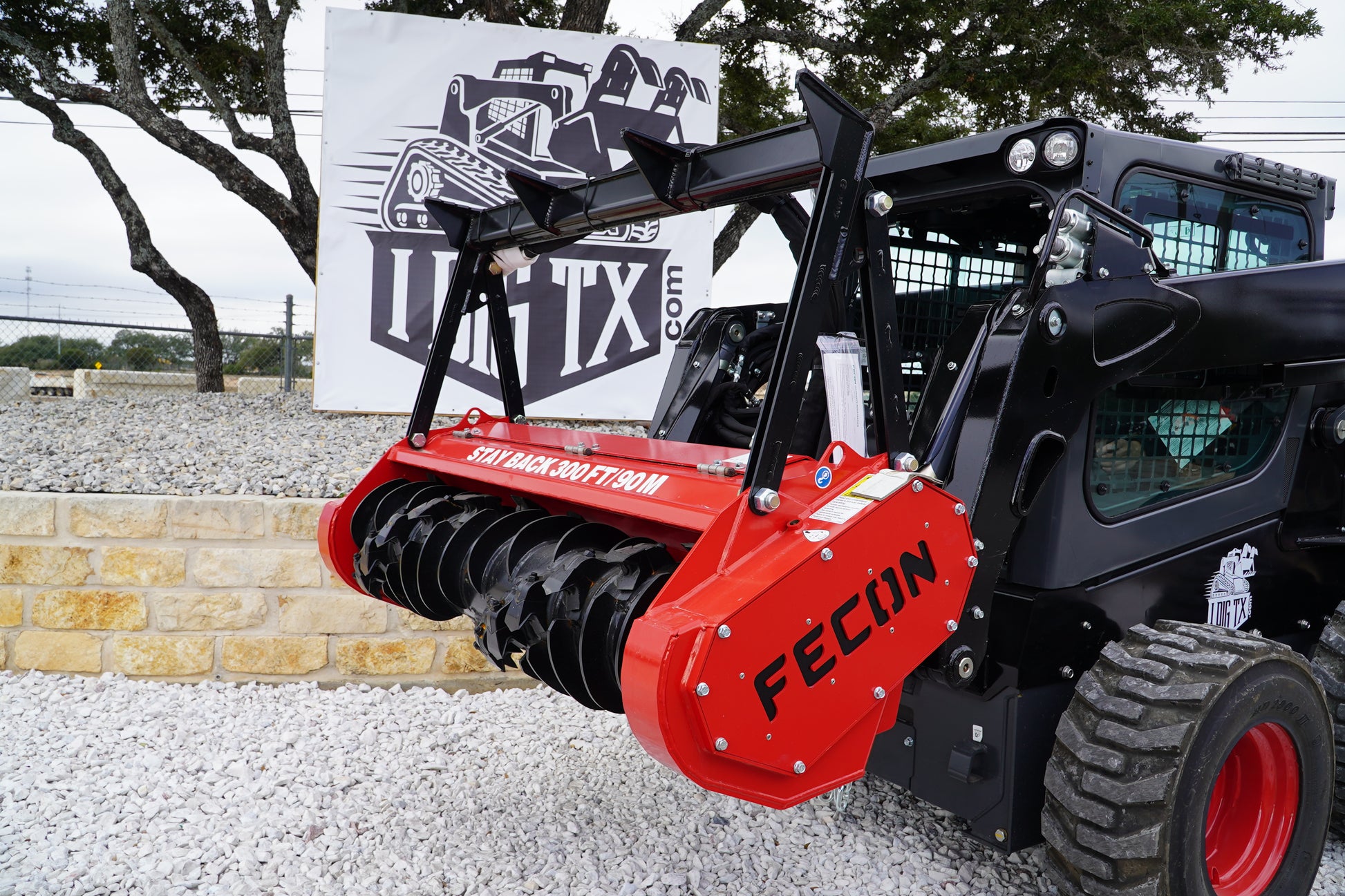
Credit: idigtexas.com
Choosing The Right Skid Steer
Choosing the right skid steer is crucial for your projects. It can impact productivity and efficiency. A key factor is understanding standard flow and its applications. This section will guide you in selecting the best skid steer for your needs.
Assessing Job Requirements
Before selecting a skid steer, assess your job requirements. Consider these factors:
- Type of Work: Is it landscaping, construction, or demolition?
- Attachment Compatibility: What attachments will you use?
- Site Conditions: Are there tight spaces or rough terrains?
- Load Capacity: What weight will you lift or move?
Understanding these elements will help determine the right skid steer. Standard flow models work well for most tasks. They operate efficiently with many common attachments.
Standard Flow Vs. High Flow Models
Choosing between standard flow and high flow models is essential. Each has its advantages:
| Feature | Standard Flow | High Flow |
|---|---|---|
| Hydraulic Power | Lower pressure | Higher pressure |
| Attachment Compatibility | Most attachments | Specialized attachments |
| Cost | Generally lower | Higher initial cost |
| Performance | Good for light to medium tasks | Best for heavy-duty tasks |
Standard flow models are ideal for general tasks. They work well with buckets and forks. High flow models excel with hydraulic attachments like grinders and saws. Choose based on your specific needs.
Attachments And Standard Flow
Skid steers are versatile machines. They can perform various tasks with the right attachments. Understanding standard flow helps you choose the right tools. Standard flow refers to the hydraulic system’s pressure and flow rate. This affects how attachments work. Let’s explore popular attachments and how to maximize efficiency.
Popular Skid Steer Attachments
| Attachment | Purpose | Flow Rate (GPM) |
|---|---|---|
| Bucket | Loading and lifting materials | 10-20 |
| Forks | Moving pallets | 10-20 |
| Brush Cutter | Clearing brush and grass | 15-25 |
| Snow Blower | Removing snow | 15-20 |
| Auger | Drilling holes | 8-12 |
These attachments have different flow requirements. Always check compatibility with your skid steer.
Maximizing Efficiency With Standard Flow
To get the best performance from your skid steer, consider these tips:
- Select compatible attachments for standard flow.
- Regularly maintain hydraulic systems.
- Monitor flow rates for optimal performance.
Using attachments designed for standard flow ensures:
- Better productivity.
- Reduced wear on the machine.
- Enhanced safety during operation.
Understanding standard flow can boost your skid steer’s capabilities. Choose the right attachments wisely.

Credit: www.bigrentz.com
Power Dynamics In Skid Steers
Understanding the power dynamics in skid steers is essential. These machines rely on hydraulic systems. This system determines their efficiency and performance. Proper knowledge of hydraulic horsepower and flow rates is crucial.
Understanding Hydraulic Horsepower
Hydraulic horsepower is a key concept in skid steer operation. It measures the power generated by hydraulic fluid. The formula for hydraulic horsepower is:
Hydraulic Horsepower = (Flow Rate × Pressure) / 1714Here’s what each term means:
- Flow Rate: Measured in gallons per minute (GPM).
- Pressure: Measured in pounds per square inch (PSI).
Higher hydraulic horsepower means more power for tasks. It enhances the machine’s efficiency.
Flow Rate And Pressure Balance
Flow rate and pressure work together in skid steers. A balanced system maximizes productivity. Here are some key points:
- Flow Rate: Determines how quickly fluid moves.
- Pressure: Affects the force applied to the attachments.
Here’s a simple table to illustrate the relationship:
| Flow Rate (GPM) | Pressure (PSI) | Hydraulic Horsepower |
|---|---|---|
| 10 | 2000 | 11.6 |
| 15 | 2500 | 17.6 |
| 20 | 3000 | 23.5 |
Adjusting flow rate and pressure enhances performance. Operators must maintain this balance. It ensures optimal use of skid steers for various tasks.
Improving Worksite Productivity
Standard flow for skid steers can greatly enhance worksite productivity. Proper use of skid steers leads to faster project completion. Understanding how to maximize efficiency is essential for any operator.
Strategies For Efficient Skid Steer Use
Implementing effective strategies boosts productivity. Here are some key tips:
- Regular Maintenance: Keep the skid steer in top shape.
- Operator Training: Ensure all operators are well-trained.
- Plan Tasks: Organize jobs before starting.
- Use the Right Attachments: Choose attachments that fit the task.
- Monitor Fuel Levels: Always check fuel before starting.
Avoiding Common Operational Mistakes
Common mistakes can slow down work processes. Avoid these errors:
- Ignoring Safety Protocols: Always follow safety guidelines.
- Overloading the Skid Steer: Stick to weight limits.
- Neglecting Site Conditions: Assess the work area first.
- Failing to Communicate: Keep communication open among team members.
- Inconsistent Work Habits: Develop a consistent routine.
| Mistake | Impact | Solution |
|---|---|---|
| Ignoring Safety Protocols | Increased risk of accidents | Always follow safety guidelines |
| Overloading the Skid Steer | Decreased performance | Stick to weight limits |
| Neglecting Site Conditions | Increased wear and tear | Assess the work area first |
Future Of Skid Steers
The future of skid steers looks bright. As technology evolves, so do their capabilities. These machines become smarter and more efficient each year. Innovations will enhance performance and safety. Operators can expect better control and usability.
Technological Advancements
Technology is changing how skid steers operate. Here are some key advancements:
- Telematics: Real-time data monitoring.
- Automated Controls: Easier operation for all skill levels.
- Electric Models: Quieter and more eco-friendly options.
- Enhanced Safety Features: Improved visibility and sensors.
These innovations will make skid steers more versatile. Operators can tackle a wider range of tasks. This leads to higher productivity on job sites.
The Evolution Of Standard Flow Systems
Standard flow systems have come a long way. They now offer several benefits:
| Feature | Old Systems | New Systems |
|---|---|---|
| Flow Rate | Lower efficiency | Higher efficiency |
| Attachment Compatibility | Limited options | Wider range |
| Maintenance | Frequent repairs | Reduced maintenance |
New systems provide better flow rates. They work seamlessly with various attachments. This evolution makes skid steers more adaptable.
Frequently Asked Questions
What Is Standard Flow In Skid Steers?
Standard flow in skid steers refers to the hydraulic system’s typical flow rate. This flow rate is essential for powering attachments. Generally, standard flow ranges between 10 to 20 gallons per minute. It is suitable for most common tasks like grading and lifting.
How Does Standard Flow Differ From High Flow?
Standard flow offers lower pressure and is ideal for basic tasks. High flow provides increased hydraulic power, suitable for heavy-duty attachments. Choosing between them depends on the attachment’s requirements. High flow is best for demanding jobs like mulching or snow removal.
What Attachments Work Best With Standard Flow?
Attachments like buckets, forks, and grapples function well with standard flow. These tools usually require less hydraulic power. They are efficient for landscaping, material handling, and light earthmoving. Always check the attachment specifications for optimal performance.
Can I Convert Standard Flow To High Flow?
Converting standard flow to high flow is generally not feasible. Skid steer hydraulic systems are designed for specific flow rates. To utilize high flow, consider upgrading to a compatible model. This ensures optimal performance and prevents damage to the machine.
Conclusion
Understanding standard flow for skid steers is essential for optimal performance. It enhances efficiency and ensures better control of attachments. Knowing how to adjust flow settings can significantly impact your work. By mastering this concept, operators can maximize productivity and extend the lifespan of their equipment.
Equip yourself with this knowledge today.


